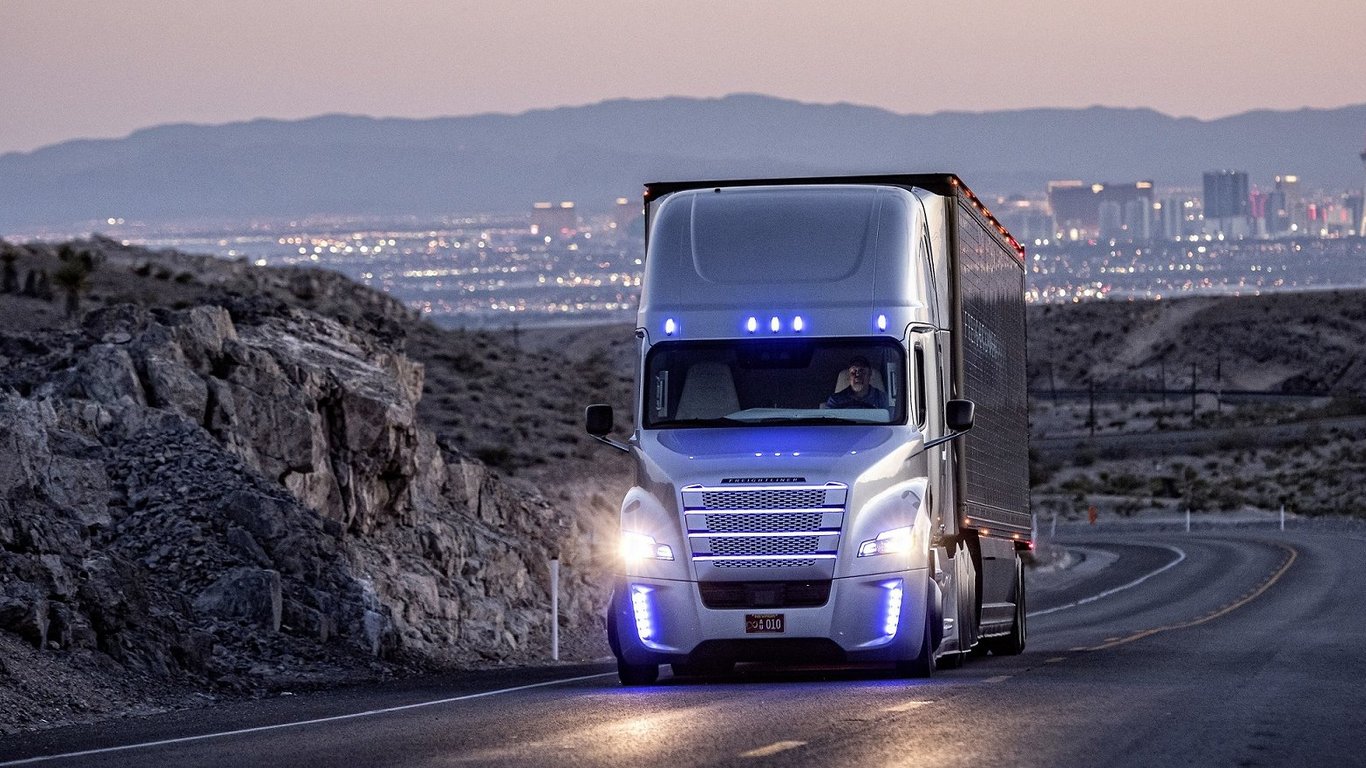As a pioneer of autonomous driving, Daimler Truck has a clear roadmap for autonomous trucks. The goal is to make roads safer and help freight-forwarding companies boost their productivity.

Why autonomous driving?
According to the United States Department of Transportation, the amount of freight carried by trucks increased by 56 percent over the last decade and is expected to nearly double in the next 25 years. At the same time, experts from the logistics sector think that the existing shortage of truck drivers in the USA will continue to worsen. These developments will greatly increase the demand for efficient transport solutions. In our opinion, autonomously driving SAE Level 4 trucks are part of the solution for being able to handle this increased transport volume. The fourth level of the SAE taxonomy of autonomous driving refers to driving automation systems that can perform all driving tasks in a specific situation without expecting the human driver to intervene at the system’s request. As a result, the vehicle continues to operate in a completely autonomous fashion if the driver does not react.
Martin Daum, Chairman of the Board of Management of Daimler Truck: “We are fully committed to autonomous trucking as it can benefit everyone. It will increase safety, because systems do not get tired and do not lose attention. It will boost logistics performance by enabling trucks to run more. It will help society cope with the growing volume of freight, particularly in times of severe driver shortages. We see an opportunity for Daimler Truck to increase our service revenue, as well as for significant market and growth potential. For all these reasons we are developing the Level 4 autonomous-ready truck of the future.”
Development objective: “Hub-to-Hub” application in the USA
In this application, drivers deliver goods in conventional trucks over the first mile to transfer hubs along highways in key U.S. freight corridors. From there, the trailer is coupled with a purpose built L4 autonomous truck that safely navigates long stretches of highways by driving autonomously from hub-to-hub. Once the L4 truck reaches the destination hub, the last-mile distribution will continue via manually driven trucks. Factors such as long, open stretches of highway, increasing demand for freight movement, large fleets and forward-looking regulators make the U.S. the ideal proving ground to deploy this new technology first. Daimler Truck is pursuing the goal of developing autonomous trucks for long-haul transport. The company is aiming for market entry in a hub-to-hub case with SAE Level 4 autonomous trucks in the United States in 2027.
Pioneer of automated driving
Back in 2014 Daimler Truck presented the Mercedes-Benz Future Truck 2025. It was the world’s first automated truck and demonstrated the system’s technological possibilities and the great potential it has for the economy and society at large. In 2015 the Freightliner Inspiration Truck was approved for road use in the United States, making it the first automated commercial vehicle to be granted such approval. Today, Daimler Truck offers partial automation driving functions (SAE Level 2) for its three main markets in series production. These systems are Active Drive Assist in the Mercedes-Benz Actros and the FUSO Super Great and Detroit Assurance 5.0 with Active Lane Assist in the Freightliner Cascadia. These active assistance systems for longitudinal and lateral control are based on a highly developed combination of radar and camera systems. What’s especially notable about these assistance systems is that they are usable in all speed ranges, starting from 0 km/h.